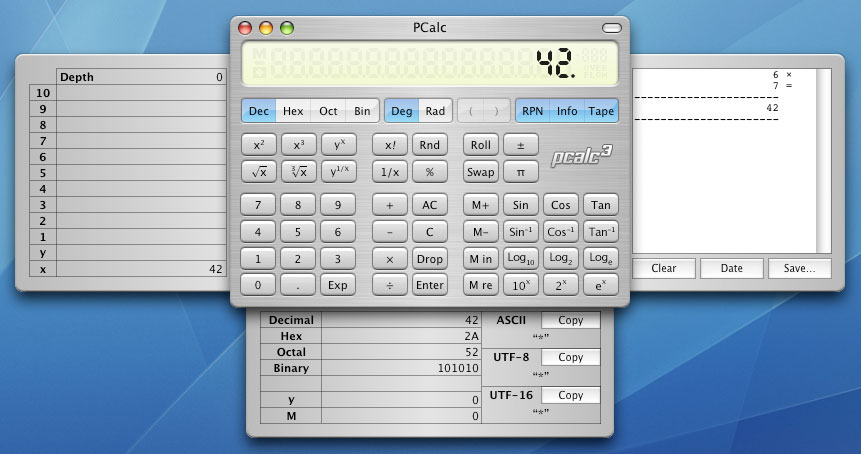

The functions available when the 2nd button is tapped are probably what you’d expect: There’s also a “shake to undo” feature, but I have that turned off because I feel goofy shaking my iPhone in public. Here’s a tricky two-handed screenshot I did in mid-swipe: Have you ever made a calculation, gotten an unexpected result, and then wondered if you entered the right numbers? The undo/redo history is perfect for retracing your steps. Since we’re on the topic of swiping the display, PCalc keeps an undo history, which you can work through by swiping left-to-right and right-to-left to go backward and forward.

It’s little conveniences like this that make PCalc so handy. This is just the thing when you want to see more of the stack than usual, but only for one or two calculations. Swiping down or up on the display increases or decreases the display height by one line. What’s especially nice about it, though, is that you don’t have to dig down into the preferences to make a change. The number of stack lines displayed is one of PCalc’s many user-settable options, accessed through the ⓘ button at the top right.
LATEST VERSION OF PCALC USUM PLUS
I normally have it set to display 3 lines, the x and y registers, plus one more item of the stack. You’ll note that the display area at the top is kind of tall. Here it is, with the Twilight color theme: I prefer holding my phone in portrait mode, and PCalc has a great layout, called Engineering, for that. A more serious knock on the built-in calculator is that its scientific layout is available only in landscape mode. So I’m predisposed to prefer PCalc over the iPhone’s built-in calculator. Spending my twenties and early thirties using HP’s great 15C tilted me that way. I’m not an RPN fanatic, but I do prefer it to algebraic input. Let me start by saying that I use PCalc in RPN mode, so my screenshots and discussion will be biased in that direction.
LATEST VERSION OF PCALC USUM FULL
This is, as developer James Thomson says, a full 90.09009009009% off the normal price of $9.99. (And if you’re reading this before December 29, 2012, there’s another obvious reason for posting now: PCalc is on sale for just 99¢. But the little improvements have accumulated, so it’s time to discuss it once again. Recent updates, though, have been more about tweaks and refinements than big jumps in functionality and style, so I’ve let them pass without comment. Time was when every new version of PCalc for iOS was cause for me to write a blog post about its new features. Next post Previous post PCalc rides again


 0 kommentar(er)
0 kommentar(er)
